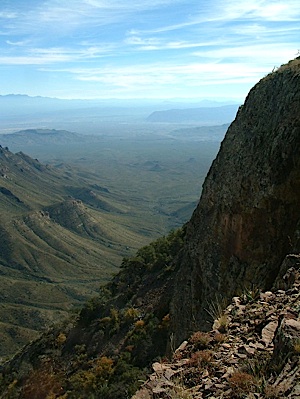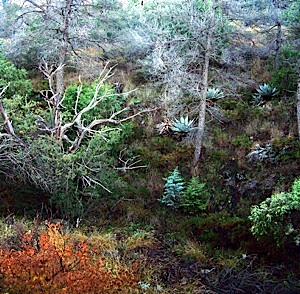Big Bend National Park sits at a cultural crossroads—on the border of Texas and Mexico—but it speaks the universal language of natural beauty.
Technicolor sunsets here in West Texas fade away to crisp, coal-black skies that seem to bring the cosmos within arm’s reach. A wild and scenic river encourages lazy days floating through the landscape. The park’s geology is a soaring museum, locking in its grasp vestiges of prehistoric life.
You could miss some of these wonders if you head inside at sundown. So dark are nights at Big Bend, and so alluring for celestial exploring, that the park is recognized as a Gold Tier International Dark Sky Park by the International Dark-Sky Association.
Clear skies, temperate nights, and miles of undeveloped space in the vast and remote Chihuahuan Desert provide an unforgettable astronomical experience. With the rangers’ help you’ll enjoy night hikes, stargazing through telescopes, and pick up tips on night sky preservation. When the sun returns, it reveals a stunning landscape that descends from 7,825-foot Emory Peak, through the rugged Chisos Mountains, across desertscapes that slowly reveal once-lush prehistoric lands, to the wild and scenic Rio Grande River.

The landscape at Big Bend is huge. Photo courtesy of Friends of Big Bend National Park.
This can be a demanding landscape of more than 800,000 acres, but it is also a wondrous one prized for its stark beauty, amazing geology, and stories locked in rock. Those stories are nearly 250 million years old, dating to the Triassic Age when reptiles ruled the Earth.
Wildlife Abounds
Today Big Bend remains rich in wildlife, too. Black bears, once thought to be gone from the park, slowly are repopulating it. Mountain lions reside here, too, as do coyotes, javelinas, and 20 species of bats!
Big Bend’s location along migratory bird routes also makes it an optimal place for birding. Those patient enough, and lucky enough, just might spot the Colima Warbler, a gorgeous bird that heads to Big Bend in the spring to mate and nest before flitting back south to Mexico.
If you’re looking for dramatic desert scenery, a chance to get away from crowds, and lots of variety in elevation, climate and things to do, you’ll find all that and more in Big Bend.
Where should you start?
Consider these insider tips from Friends of Big Bend National Park to get the most out of your visit to this grand landscape:
Families flock to the Rio Grande Village area for birding. There is a great boardwalk called the Rio Grande Village Nature Trail, and a small visitor center. Helpful rangers can tell you what birds are out and about.

You can also find spectacular forest settings in the park. Photo courtesy of Friends of Big Bend.
Kids will be happy playing on the sand dunes along the Rio Grande Wild and Scenic River. Find them via a short hike at Boquillas Canyon.
After a long day, relax at the Hot Springs, an historic area of Big Bend where you can soak your bones.
Take a drive. Follow the Old Maverick Road, an improved dirt road that is wide and easy to navigate, into the mountains. There are great cultural stops along the way, such as Luna’s Jacal and Terlingua Abajo, as well as some historic overlooks.
Explore the Dorgan Sublett Trail, a 1.5-mile loop that offers panoramic views of Santa Elena Canyon, the Rio Grande River, Mexico, and cultural ruins.


 Support Essential Coverage of Essential Places
Support Essential Coverage of Essential Places






